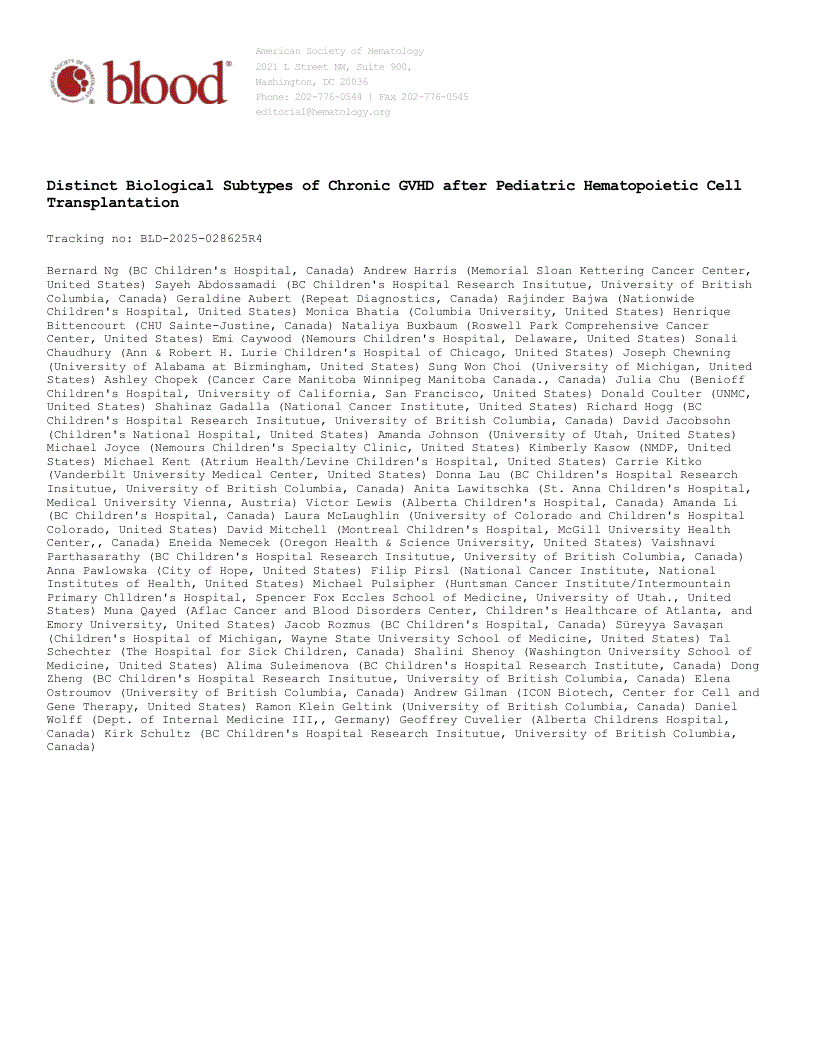Key Points
There is more than one distinct biologic subtype of chronic graft-versus-host disease that was replicated in an independent cohort.
The biologic subtypes of chronic graft-versus-host disease appear to be independent of organ involvement
Chronic graft-versus-host-disease (cGvHD) is the primary non-relapse limitation to a successful hematopoietic cell transplantation (HCT) and is largely treated as a single biological entity. We hypothesized that there exist different biological subtypes of cGvHD. Using the ABLE network database, derived from the largest pediatric cGvHD cohort worldwide, we applied clustering analysis to subtype cGvHD patients from the ABLE1.0 and 2.0 studies (51 cGvHD patients, 158 non-cGvHD patients). We found three distinct cGvHD subtypes: cGvHD-1 was characterized by an effector memory (TEM), cytotoxic NK cell, and early precursor B cell predominant pattern; cGvHD-2 was phosphatidylcholine, cytokine, and plasma cells predominant; and cGvHD-3 had more naïve CD4+ T cell (TN) and naïve Treg, had later onset, and the only subtype with measurable TREC. We partially replicated these subtypes using metabolomic data from a separate pediatric cohort of the COG trial ASCT0031 (33 cGvHD patients, 39 non-cGvHD patients). Further, cGvHD-1 was associated with serotherapy (predominantly ATG) exposure, and cGvHD-3 was associated with receiving peripheral blood stem cells (PBSC) from donors, total body irradiation (TBI), and no previous acute GvHD. cGvHD-2 was associated with liver involvement and cGvHD-2 and -3 with de novo cGvHD. Overall, none of the subtypes closely associated with organ involvement. Contrasting each subtype against non-cGvHD patients, the 3 subtypes shared common markers, all of which were used in our previous cGvHD diagnostic classifier. These findings suggest the presence of distinct biological subtypes of cGvHD that may help guide therapeutic strategies.

